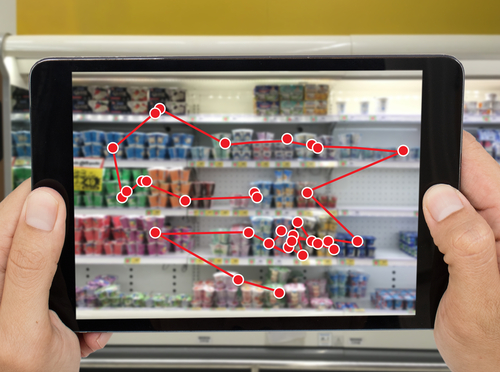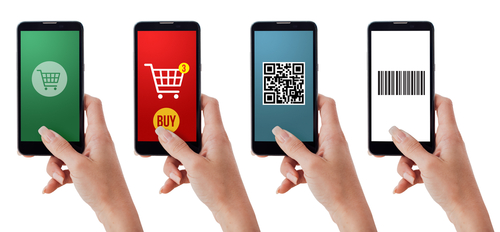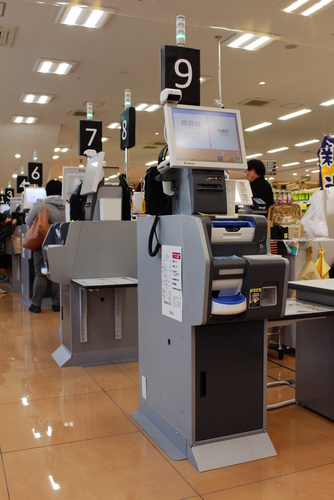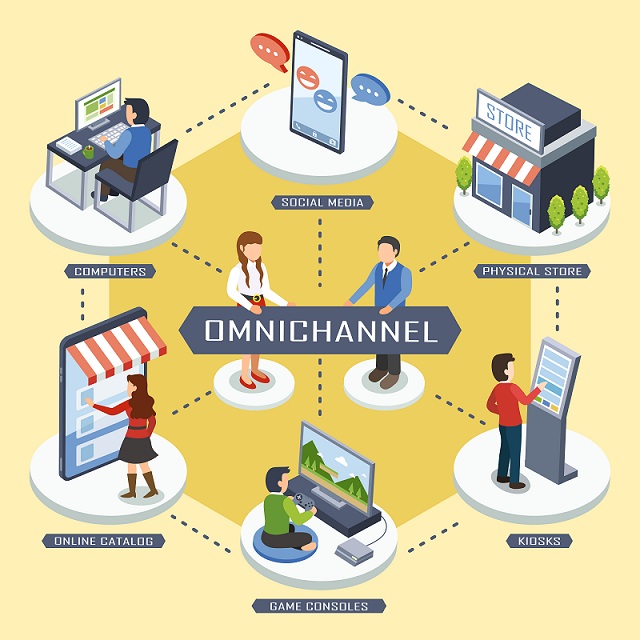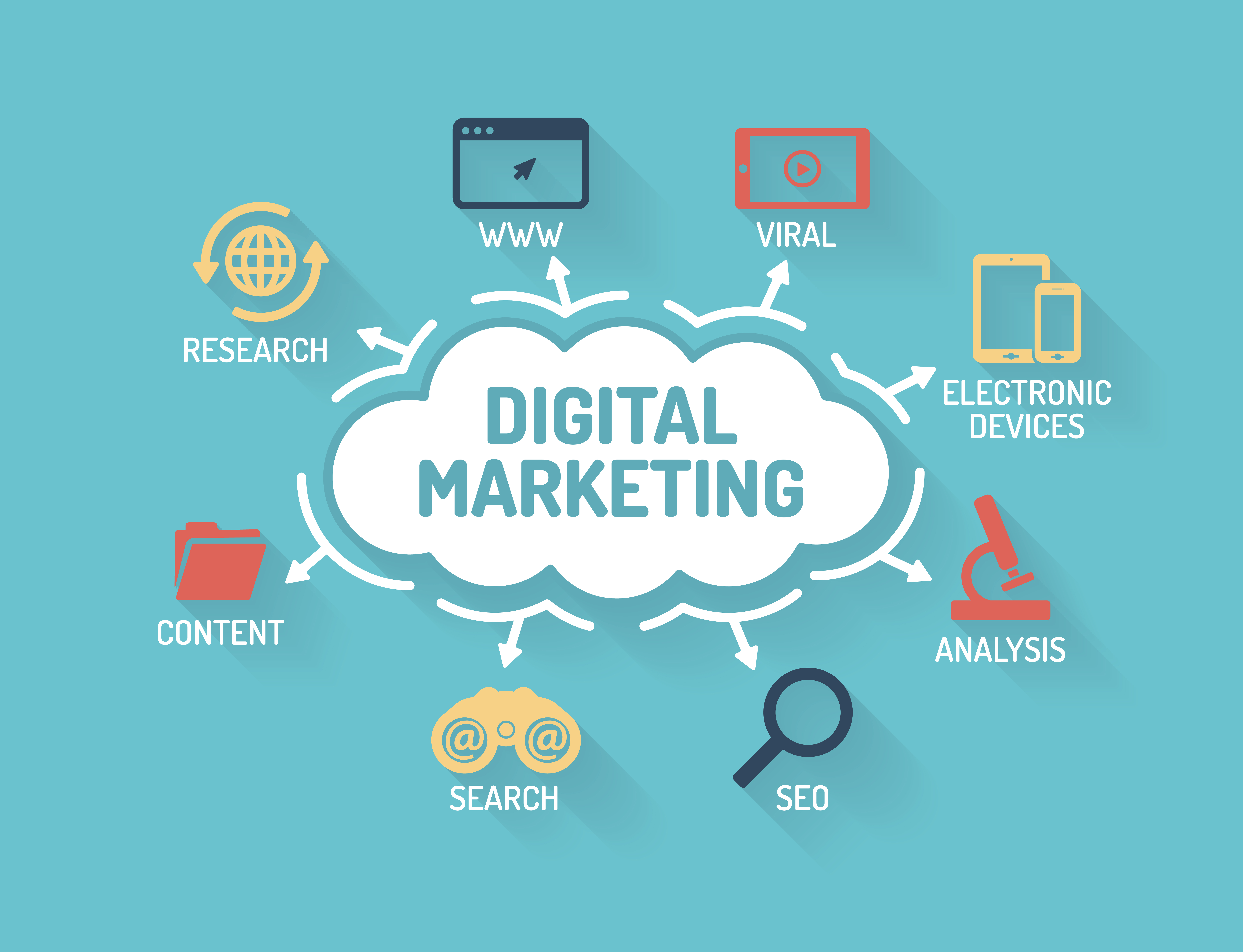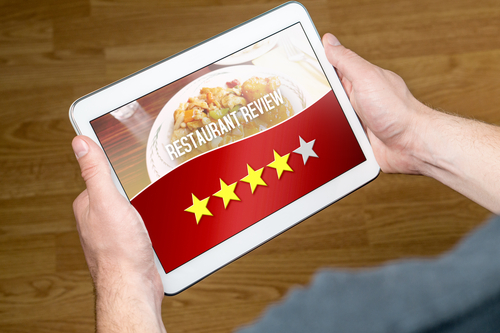Category: Web Application Development
The Internet holds over 1.8 billion websites as of today. Out of this big mix, the number of active websites is no less than 644 million. What is equally startling is that more than one-quarter of them are powered by WordPress. Starting off in 2003, WordPress has evolved down the line from a blogging platform to the world’s most popular open-source content management system.
From its first version 0.7 to the current 5.0.1, much has changed. Refined UI, the introduction of plugins, widgets, streamlined dashboards and an array of new features. When it comes to 2018, WordPress is much more than a typical CMS platform. Most businesses now run their websites on WordPress whether in e-commerce, LMS, marketplace etc.
It is easy to use and economical, which is why most businesses prefer WordPress over other CMS platforms. WordPress is 100% customizable allowing businesses to optimize their website or blog for easy discovery and indexing by search engines. Moreover, WordPress sites are perfectly scalable and feature extended functionality with the addition of plugins.
With a string of new releases on their way, WordPress is further broadening its scope. To really understand how, here are 33 astonishing facts about WordPress in 2019.
33 amazing facts about WordPress in 2019
1) WordPress Drives One-Quarter of the Internet
WordPress powers nearly 32.5 % of all the websites on the Internet, which means nearly one out of three websites that you have visited is built with WordPress. That is to say, about 75 million websites now run entirely on WordPress.
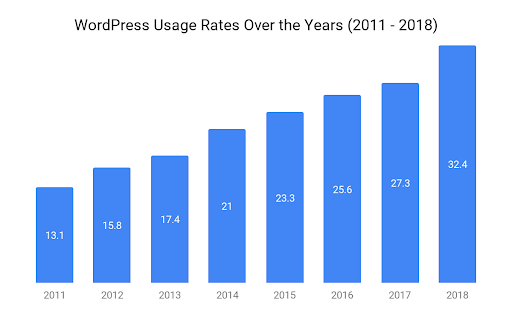
Source – W3Techs
2) WordPress is Growing Ahead of its Competitors
WordPress attained an astonishing 4 % growth from 2017 to 2018 according to a study made by W3Techs. It clearly establishes that WordPress’s market growth increased by 4% in the past year.
Meanwhile, WordPress’s competitors’ growth diminished in the same year.
- Joomla’s market share actually decreased from 3.4% to 3.1%
- Drupal’s market share decreased from 2.2% to 2.1%
3) Google Trends Data Shows Growing Popularity of WordPress
From the worldwide Google Trends data of the past year, you can see how popular is WordPress compared to other competitor CMS platforms like Joomla, Drupal, Magento, and Shopify.

Source: Google Trends
4) Woocommerce Plugin has a Remarkable Market Share
WooCommerce, the eCommerce plugin for WordPress powers about 29% of all the eCommerce sites on the Internet according to Datanyze. According to the same, WooCommerce has a market share of 21% across all the eCommerce websites in the world.
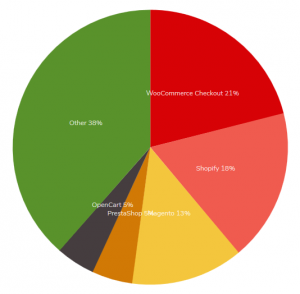
Source: BuiltWith
We worked with WooCommerce to build an e-commerce platform for one of our clients, Homeschool. It is a platform that provided users with high-quality educational resources that they can purchase or read online. Moreover, we also used WordPress to build an e-commerce website for VKC, one of the largest footwear manufacturing company in India.
5) “WordPress” Keyword has High Search Volumes in Google
In fact, the popularity of WordPress has peaked in recent times that it clearly has gained an upper hand in the search volumes of search engines. The keyword “WordPress” has around 1M-10M average monthly search volume in Google, which is 10 times the search volume for keywords of “Drupal” and “PHP”.
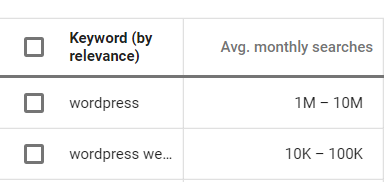
6) WordPress Leads in Global CMS Market Share
WordPress owns nearly 60% of the global CMS market share according to a report by W3Techs.

Joomla comes as the next competitor to WordPress with a market share of 6% followed by Drupal with 3.6%.
7) WordPress is Available in more than 80 Languages
Being a complete CMS solution, it is no wonder that WordPress packs more language support than its close competitors. WordPress contains translations for over 167 languages. Out of that, currently, 32 locales run full translations worldwide and has 58 up to date locales.
More languages are added by a team of independent collaborators as we write this to further extend the language support offered at WordPress. Very shortly, WordPress will cover almost all the major languages across different regions of the world to enable anyone to write, edit and publish content online from anywhere.
8) 56,319 Plugins and Counting
WordPress does have around 56,319 free plugins in their repository. That is by far one of its biggest advantages, which can be summed down to one word, extensibility.
The sheer number of plugins, both free and paid is what sets WordPress apart from its competitors. The WordPress plugin repository is growing each day as new plugins are added on a continual basis.
Besides, one can easily build their own custom plugins as is the case with one of our projects. We built a unique custom WordPress plugin for the Australian Retailer Association to help them manage events from a single interface.
9) Alexa Ranks WordPress High
As per Alexa, WordPress.com is the 57th most popular website in the world, or in other words, WordPress.com is popular than Pinterest, Github and CNN.

Source: Alexa
10) A Single WordPress Theme Churned Out Millions
One single WordPress theme Avada has generated more than 27 Million USD in revenue. It became the highest selling multi-purpose theme and the most downloaded on ThemeForest.
Custom themes are yet another key attribute of WordPress. As we have mentioned earlier, our work on a custom plugin for one of our client did not stop with that. Our team developed a custom responsive WordPress theme that revamped their website for better load and render times.
11) WordPress is Behind Big Brands
Lots of big brands use WordPress. It may be surprising that an open source CMS has such a high number of valued users from various businesses. Here are some of the top brands using WordPress to manage and publish their content online.

12) A Swift, Responsive and Redefined WordPress with Calypso
Calypso is the new JavaScript and API driven interface for WordPress.com. It is a highly powerful interface with lots of futuristic features that simplify how we manage websites. Calypso includes multi-site support with better page loading speed by utilizing the REST API and WordPress JavaScript.
Calypso is available as a downloadable application from WordPress.com that utilize its interface on computers running on Windows, Mac, and Linux operating systems. The responsive design offers a streamlined user experience that makes it a very user-friendly platform for managing websites.
13) Gutenberg – An Entirely New WordPress Experience
Gutenberg is the new react driven revolutionary editor of WordPress. It is said to be a radical step in the future of WordPress giving a whole new disruptive editing experience, especially for media-rich web pages.
Creating rich and engaging content is made easier with Gutenberg’s refined interface. It includes new tools like blocks that help users with even basic technical knowledge stylize and rearrange multimedia content effortlessly. Gutenberg will be the default editor of WordPress from version 5.0(which is set to release soon).
14) Moz lists WordPress in its Top 500
Moz in its Top 500 domains, lists WordPress.org as the 7th most popular website in the world. WordPress.com follows close behind, ranked 10th in the list.
15) 4,300,000 downloads for a Single Premium WordPress Plugin
Wpbakery Page Builder is a premium WordPress plugin with more than 4,300,000 installations.
16) Wix Once Stole WordPress Code
Wix, one of the biggest competitor of WordPress actually once stole GPL code from WordPress. The result was several allegations made by Automattic founder Matt Mullenweg against Wix of stealing their open source under the GNU Public License (GPL) code without any attribution, credit or license. Wix CEO, responded back that they indeed used WordPress code citing it as open source and free to use.
17) Yoast is Still the most Popular WordPress Plugin
Yoast, the SEO plugin of WordPress alone has more than 5 million installations. Around since 2008, Yoast has been the favorite plugin of countless users for implementing effective SEO strategies that earn them a notable place in the search results.
18) Plugin Installations is the Highest on WordPress
Around 35+ WordPress plugins have more than 1 million active installations. When looking at WordPress.org the number of plugin downloads have exceeded 1 billion.
19) The Most Vulnerable CMS on the Planet
Security is one weak string that WordPress has long struggled with. Data suggests that nearly 60% of WordPress sites are affected by security vulnerabilities caused due to an outdated or poorly coded WordPress plugin or theme. Around 8% of WordPress sites were hacked due to a weak password.
This is, however, not a sign of weakness of the CMS platform. Out of date versions and plugins have been identified as the leading causes behind the vulnerabilities that affect the platform such as hacking and malware attacks.
20) WordPress Hosts an Amazing Global Community
At the heart of WordPress is a large community dispersed globally who collaborates and contribute to making the platform better. WordCamps is one such, which are local conferences that covers everything about WordPress.
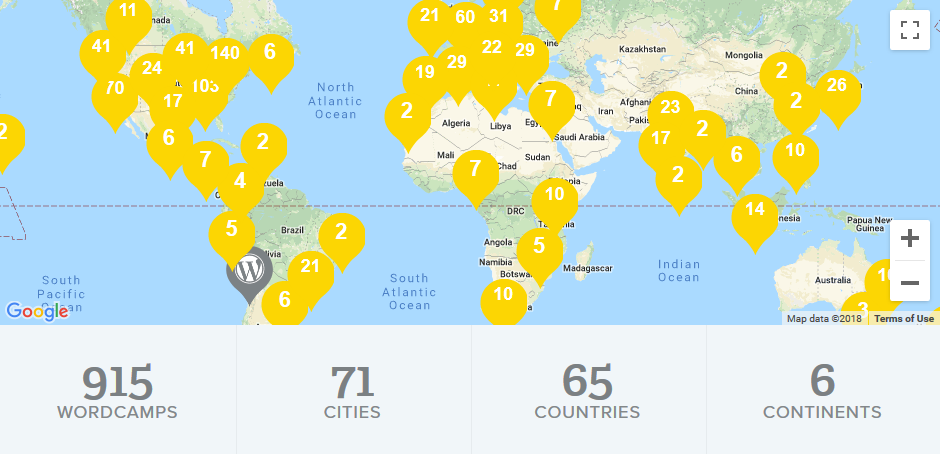
As of now, around 915 WordCamps have been organized in 65 countries and 71 cities across 6 continents. It brings together developers all over with sessions and activities to find ways to more effectively use WordPress.
21) A Majority of Educational Institutions Use WordPress
44.8% of colleges, schools, and universities all over the world use WordPress.
- Harvard Blogs
- MIT
- Northwestern University
- Boston University
- University of Berlin
- University of Melbourne
- Oregon State University Blogs
22) WordPress is Used by Governments All Over The World
WordPress powers thousands of government websites in all parts of the world. The list includes dozens of US Federal and State government websites, counties, small towns, high schools, etc.
Government websites like America.gov, Congressional Budget Office, Library of Congress, Brazilian Culture Ministry etc. are some that are run entirely using WordPress.
23) WordPress.com is not the Same as WordPress.org
WordPress.org(self-hosted WordPress) is the actual open source WordPress software. Anyone can download, install, modify and host it anywhere.
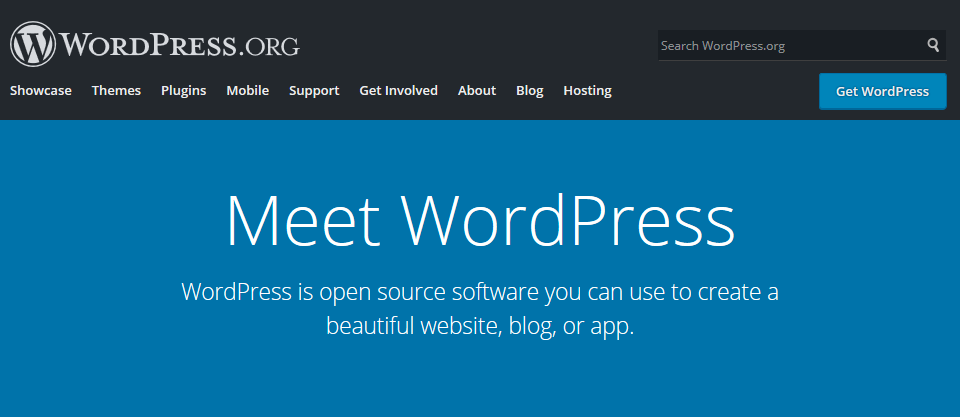
WordPress.com is the “website-as-a-service” implementation built on the WordPress.org software. WordPress.com hosts your site and handles everything for you.
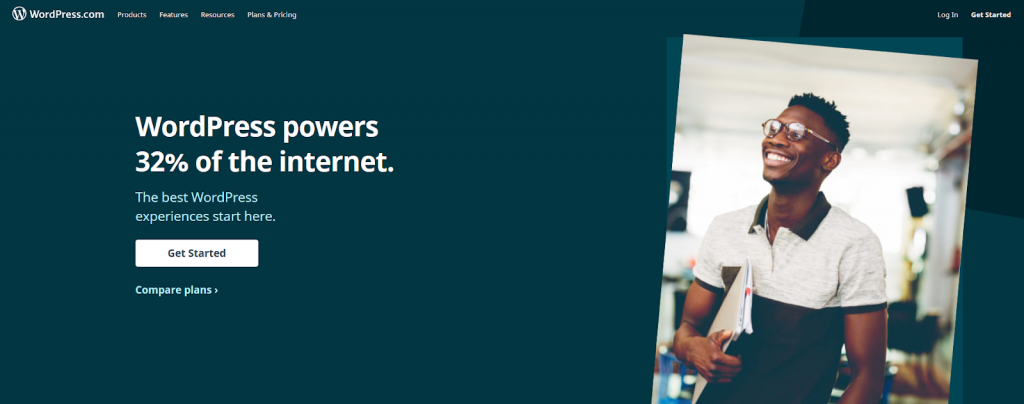
24) WordPress versions are Named after Jazz Musicians
WordPress core developers share a love of jazz music, and since WordPress 1.0 all major releases are named in honor of jazz musicians they admire.
25) GNU GPL Licenses WordPress
WordPress is released under GNU GPL which means you have the freedom to,
- Run the program for any purpose.
- Study how the program works and change it to make it do what you wish.
- Redistribute copies so that you can help your neighbor.
- Improve the program and release your improvements (and modified versions in general) to the public, so that the whole community benefits.
Getting started with WordPress [Source : LearnWebCode]
26) WordPress has only 822 Employees
WordPress has only around 822 employees around the world which is 1/700 of the total employees in Amazon.
| Website | Monthly Visits | Employees |
| Amazon.com | 199M | 575,700 |
| WordPress.com | 147M | 822 |
| eBay.com | 104M | 14,100 |
You can also see that, even though eBay has much less traffic compared to WordPress, they do have 17 times more employees than WordPress.
27) Content Keeps Pouring Out from WordPress
Users produce about 69.3 million new WordPress posts and 72.0 million new comments each month. By looking at the live activity, we can infer the amount of usage at different countries.
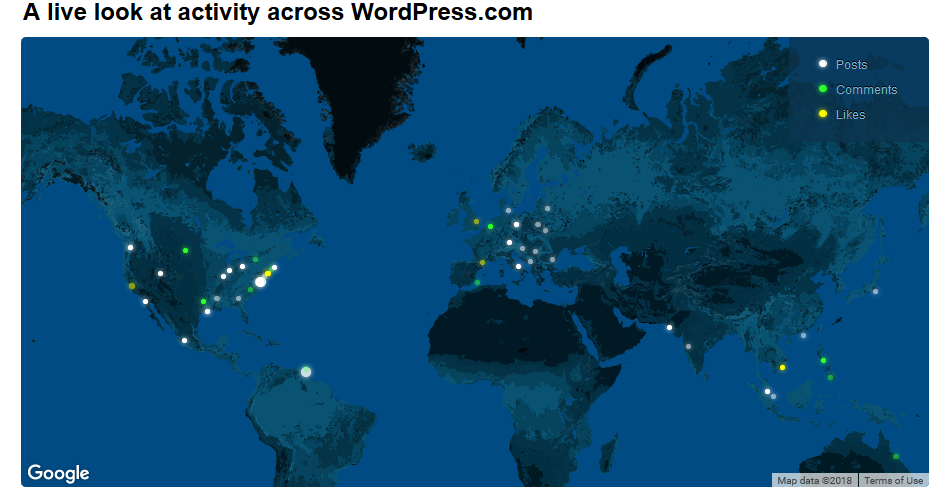
28) More WordPress Versions in a Short Span
More than 98 versions of WordPress has been released till now. The development community has been quick in coming up with redefined versions to help make WordPress better and an all-encompassing CMS system open to everyone.
29) WordPress Once Passed off as a Necessary Job Skill
WordPress was the most requested job skill in the world in 2014. For developers, having a handful of WordPress skills like writing, publishing and managing content on the platform were viewed as necessary to land a job in the information technology sector.
30) WordPress Surpassed Amazon in Visits One Time
Some years back, WordPress.com had more visits than amazon.com. The popularity of the CMS platform has reached its peak that it now gathers more visits than any other websites belonging to different categories.
31) You can Setup a WordPress Website in 5 Minutes
WordPress does have the famous 5-minute installation setup, which means you can launch your first WordPress website fully ready in just 5 minutes.
32) A WordPress Plugin Akismet is Catching more Spam than Ever
Akismet, the spam blocking WordPress plugin catches 7,500,000 pieces of spam per hour. As of now, Akismet has succeeded in blocking about 456, 455, 260, 375 spam comments from the web. Several websites integrate Akismet into their WordPress to deal with spam worry free.
33) WordPress has its own Merchandise Store
The official merchandise store of WordPress has been named as Swag Store. It sells a range of WordPress merchandise from t-shirts, coffee mugs, sweatshirts, sunglasses, carry bags and skullcaps.

Summing Up
From individual bloggers to big companies, WordPress helps them share their passions, promote their company’s products and engage with a wider audience. Being a step ahead of its competitors, WordPress puts forth what an ideal CMS platform should be like. Open source and an extensive collaborative community that strives to make it better with each new releases and updates.
For this reason, we at Fingent rely extensively on WordPress to create, publish and manage all our digital content as well as use it across different projects to serve the requirements of our clients. The conciseness and extended capabilities of WordPress ensure that digital publishing and management is more swift and easier than before.
We can help you with the same as our expertise in WordPress can give your business a solid online identity that will push your content across a wider audience and distribute your marketing efforts more effectively.
Stay up to date on what's new

Featured Blogs
Stay up to date on
what's new



Talk To Our Experts
The worldwide enterprise mobility market is growing by 24% GAGR, and its value will likely touch $140 billion by 2020. A key contributor to the growth is Android. However, enterprise seeking to leverage the gains of Android-powered mobility, however, needs to roll out intuitive Android apps, through which they can channel the ecosystem to the desired effect.
Here are the benefits enterprises stand to leverage by investing in Android apps
1. Android Cut Costs
Android is open-source. Its Software Development Kit (SDK) is available free of cost. Enterprises rolling out Android apps to power their systems and processes need to spend only on the development costs. They can minimize the software licensing costs, and get their software free of any royalties. The saving is considerable, considering CFOs in today’s highly competitive age are penny-pinchers, and reluctant to invest in anything not directly contributing to the bottom-line. 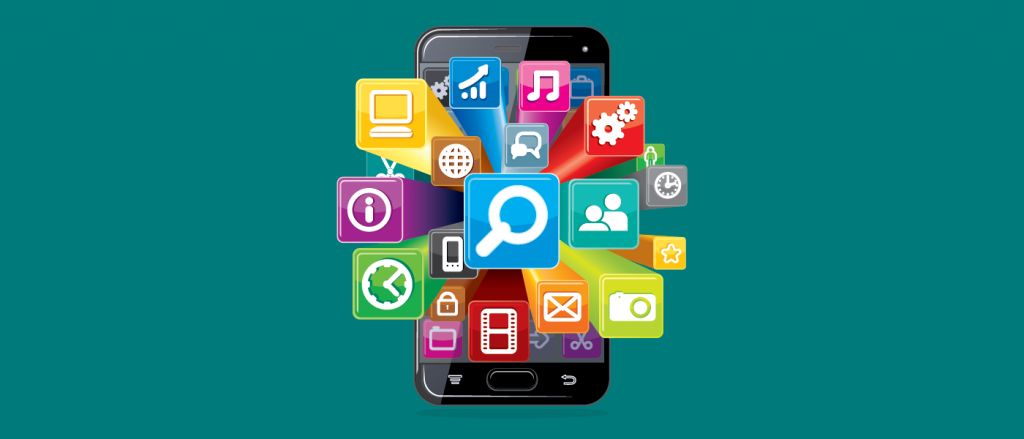
2. Android facilitates Easy Integration
Most enterprises have multiple entities, departments, and processes. Having separate and distinct systems or processes for each entity needlessly duplicates the efforts and costs needed to maintain such systems, and also creates disjoints and data silos. Many enterprises strive to run company processes through a single integrated system. Android is the perfect platform for such an approach, as is is resilient, and able to run on any device or form factor. An enterprise can easily develop a CRM on Android and seamlessly link it with an Android developed a marketing automation suite, a Human Resource Information System, and more, creating an integrated whole. Such an approach ends the menace of data silos and facilitates the smooth and seamless flow of information across the enterprise.
A comprehensive Android-based platform is a convenient way to manage all functions of enterprises. The enterprise can roll out several functional apps, each linking to the integrated system. Such apps, which sits over the traditional enterprise systems, and which updates the systems in real-time, may be tailored to suit the workflow and process of the employee or the department. It gives an unprecedented level of flexibility to the employees and makes the enterprise adapt to respond to changes faster. For instance, if a particular situation requires a new workflow or a new level of coordination, all the enterprise needs to do is roll out a new app and disseminate it to the concerned employees or stakeholders.
3. Android Delivers Flexibility
Many-a-times, enterprises are forced to adjust their business operations to cater to the demands of an inflexible system. The ease and low costs to develop Android apps, and the flexibility of the Android platform mean enterprises need not make such sacrifices and can pursue their objectives in the most efficient way possible. Android makes it very easy and viable to develop tailor-made, and even innovative apps to suit any processes or any requirement. Custom apps may also be localized to maximize productivity.

4. Ease of Installation and Use
Developers have it easy with Android, thanks to the availability of Android tools which offer easy ways to improve, fix, and update apps thanks to the facilities that Android tools provide them.
Android applications are flexible and resilient to be published and pushed in multiple ways. It may be hosted in an app store, or even distributed through APKs. Enterprises can easily ensure their employees, customers or other targeted stakeholders can access and download the app in a very simple way, without any hassle. Unlike other stacks, which require a lot of learning curve and even set-up assistance, Android’s simple and easy nature makes it a DIY proposition.
Android brings very few complications or compatibility issues. Custom built Android apps, designed with end-user requirements in mind offer very little complication and syncs seamlessly with any business software, including legacy systems. The open source nature also means the availability of several connectors to link enterprise applications with popular packages such as Salesforce, MailChimp, and more.
Bizness Apps – “Mobile Apps For Businesses Made Easy” [Source : Flikli]
5. A Fillip for BYOD
The Bring your own Device (BYOD) concept is a rage in enterprises. A big reason for its popularity is the win-win proposition it offers to both the enterprises and the employees alike. Enterprises save on hardware and training costs, whereas employees get the convenience of working in their own familiar devices, with the associated productivity benefits. However, the success of BYOD depends on the availability of highly functional apps, through which employees can access their work. Logging in to the corporate intranet through a mobile browser every time is highly cumbersome and in any case, an inefficient way to work, frittering away much of the gains of mobility.
Android apps allow the employee to work seamlessly. It allows the enterprise to set policies to ensure BYOD does not compromise the integrity of enterprise data and processes.
With BYOD, employees, especially those on the move, can access enterprise applications securely through the API, and from their usual device. This expedites the decision-making process, makes work seamless, and saves the executives’ effort.
6. Valuing the Stakeholders
Forward-looking enterprises of today share some common traits, and being responsive is one such trait. Enterprises which are responsive to its stakeholders, promote an open culture, and encourage feedback, gain a positive image, and reap rich indirect benefits out of it. A collaborative software development approach, with end users and other stakeholders having a major say syncs with such a culture and environment.
Android is the perfect medium for such a culture and approach. The large and vibrant Android community makes it the perfect option to receive customer feedback. Users of an Android app can easily share their feedback and even rate the app in the Play Store. Several freely available tools make collaboration easy.
7. Improved Customer Engagement
While mobile apps revolutionize the internal workings of an enterprise, its potential to boost customer engagement stands underrated.
Mobility is clearly the future, with more people already accessing the Internet through their smartphones than through traditional computing devices such as PCs and tablets. Among the various mobile platforms, Android is the dominant player, with 84% of the total mobile market share. Android’s dominance is unlikely to end anytime soon either. Enterprises investing in customer-facing Android apps, and promoting customers to download it to their smartphones, stand the chance of establishing a secured and reliable engagement channel with the maximum number of customers.
Stay up to date on what's new

Featured Blogs
Stay up to date on
what's new



Talk To Our Experts
Few lines about Varghese Samuel -CEO of Fingent Corp
Mr. Samuel is the Founder and CEO at Fingent Corp, a Global Technology company founded in 2003. Samuel’s ability as a leader, to span a breadth of businesses and technologies has enabled Fingent to build and deploy technology platforms which realize tangible business benefits for Enterprise businesses across the globe.
Over the last couple of years, he has led Fingent’s transformation to the cloud-based services business – Products and services that Fingent currently offers leverage modern cloud platforms and frameworks. Samuel has been a Technologist and an Entrepreneur leading technology innovations over the last 20+ years. He has a diverse background in the broader financial services and healthcare industry, and a proven track record of transforming businesses by creating innovative technology solutions. Samuel received a Master’s Degree in Engineering from Indian Institute of Technology, Mumbai India.
1. Give us a brief introduction about your company.
Since our inception in 2003, Fingent has pioneered custom solutions that have become central components in our client’s business success. Our technology and industry expertise enables us to partner with clients to deliver sophisticated solutions rapidly and on budget. We apply modern design principles, together with the latest in mobile, cloud and desktop technologies to help create solutions. As an organization, our primary focus is to build technology solutions that help businesses simplify/streamline their existing business processes, prepare for future growth, offer new services, reduce operational overheads, lower costs and help organizations connect better.
Fingent has been a recognized force to reckon in the technology space as we have made significant investment in producing advanced software products and platforms that will transform the technology industry.
2. What are the services you offer to your clients?
Fingent has been building custom enterprise business applications since inception for major corporations, small/medium businesses and startups across the Globe. As a pioneer in delivering technology driven innovations, we have segmented our focus areas into 8 Strategic technology Business Units, to better respond to client requirements. Our Strategic Business Units are as follows
● Microsoft
● SAP
● Enterprise Mobility / Digital
● Open Source
● Dev Ops and Infrastructure management
● QA
● Product conceptualization, including UI/UX
● Data Analytics
Most of our clients prefer to opt-in for services spanning across BUs for a single program or for multiple projects. Key areas include:
● Technology consulting ( including strategy, review, and intervention)
● Software product development including PLM
● Business process automation
● Digital Marketing
3. In this intensely competitive era, what technologies, services, and project model can give you an edge over your competitors?
Our vision is to be acknowledged by our clients, people and our shareholders as the leading strategic technology partner in our market.
We will deliver this vision by providing high-quality Software & product development, IT infrastructure, project management & IT Consulting services enabled by our people, technology, and assets and supported by our committed vendors and partners.
4. After service is a necessary part of development. How do you provide customer support to your client?
We have always prided ourselves as our client’s extended technology wing. We have always focused on, not just building solutions, but, delivering value. And as extended partners of our client, we ensure that our solutions and products are always catalysts to their growth. We have account managers and business analysts who act as single point of contact for every client need. Our dedicated infrastructure and quality assurance team ensure that we deliver quality solutions that keep our clients a step ahead in the market.
5. Give your opinions on how far this app revolution can make a difference in the technology world?
We already have many personal-use apps exploiting the hyper-connected, hyper-local, hyper-personalized environments provided by mobile devices. Apps and the connected cloud-based ecosystems have dramatically transformed the personal-tech space.
However, the Enterprise Tech world has barely scratched the surface in exploiting apps for innovation and business value creation. While Enterprise users demand mass market like apps and their cloud counterparts, security and cultural challenges remain key obstacles. The challenge is to find the delicate balance between controlling mobile devices and yet freeing employees to use them efficiently. CTOs and CIOs managing Enterprise IT teams can leverage the app (and cloud) revolution to deliver significant value by:
- Placing mobility and mobile devices at the heart of their digital workplace strategies
- Deploy management policies while educating users and bringing transparency to compliance
- Provide the best Rewards versus Risks balance for the apps deployed across various employee segments
- Manage the device lifecycle – purchase, usage, and disposal
Enterprise mobility is complex. At Fingent, we can help traditional IT teams upgrade their Enterprise Mobility strategy to deliver tangible business value, by leveraging the app revolution.
6. What latest technologies and tools you’re planning to implement for mobile app development?
We prefer to use tried and tested robust technologies to create both native and cross-platform apps across – iOS, Android, Windows and Blackberry devices. We carefully evaluate new and bleeding edge tech before considering them for production use on client projects. While there are a number of tools we are evaluating, we are excited by the recently announced Azure App accelerator and Telerik Progress platform. Long term – we believe that AI and Machine learning will significantly alter the app development process. On a slightly different note, there is a lot happening on the wearables, AR and VR space. We successfully delivered our first Hololens project a couple of months ago.
7. What’s your approach to creating interactive and addictive UX/UI of mobile apps and websites?
We approach UX/UI from the perspectives of -Understandability, Learnability, and Operability under real user conditions. On mobile, we try to imbibe business features with the natural advantages provided by the mobile ecosystem – GPS and location tracking, Voice recognition, Cameras for Scanning, Gyro and Accelerometers, native connectivity option like Wifi and Bluetooth – in a secure manner. From a UI techniques perspective, we are looking at circular design patterns, interactive content layers, intelligent manipulation of content, cognitive interfaces and a few other areas to provide good learnability and operability.
8. What are the challenges you see in the outsourcing industry and how much you’re prepared to face those challenges?
I remember reading a report recently that 70% of CIOs expect to change their mix of sourcing providers to get more business value and innovation from new partner relationships. While this is a challenge for incumbents, it is good news for the outsourcing industry as a whole. For customers, outsourcing is no longer just about cost, but also about innovation and partnership. Today, most Enterprise software outsourcing is based on the staff augmentation approach. As customers demand result oriented and value driven partnerships, we see a slow but steady shift back towards the project-based approach. This requires a greater understanding of the customer’s business and higher accountability and ownership of business results.
At Fingent, we are built ground up to focus on the business outcomes that our clients wish to achieve using the product we develop for them. Our processes secure the continuity and coherence across the CX cycle from- Sales to Account Management to Operations and Delivery. This, together with our focus on technology competence development ensures that we provide innovative solutions to add value to our customers’ businesses. We are happier to provide our customers with solutions that add value to their business, to be accountable for the entire solution, than to body shop. We are ready.
9. Mention the ways you use to introduce new updates to your team.
We have many different mechanisms depending upon the source, the context, and the impact. Technology updates are managed within the BU and the teams unless it has a wide-ranging cross-functional impact. Project-specific updates are introduced from the PMO since every project has a single point of contact ( for the client) who is responsible to secure that project changes are communicated and understood by the project team. Communication channels for an update may include one or more of- meetings, emails, blogs or updates within our PM tool. We prefer face to face communication to the extent possible, either in person, or using modern video communication tools.
10. Nearly 70% users engage in wearable tech. What’s your step to enter into this revolution?
We have already started working with clients on Augmented Reality. We recently delivered a Hololens based facial recognition system for a client. We see opportunities across the entire technology stack- from chipsets to applications to cloud to data analytics and learning. Our strategy is a bimodal approach –
- Leverage competence in areas where we are already strong. For e.g. Our strengths in data analytics and visualization, help us manage the structured, semi-structured and unstructured data that flows in from wearables. Our expertise in data security helps provide Security consulting services to Wearable tech manufacturers.
- To focus on a few niche areas, where platform technologies are likely to succeed. For e.g. creating Augmented Reality applications for the HoloLens.
11. Examine the success and failures that your developers are facing while wearable app development?
The key challenges that we face in the wearable tech industry include:
- Lack of standardization. Fragmented platforms create an overhead due to the learning curve and lack of interoperability.
- Cultural challenges. Many users are not aware that by connecting wearables to the internet, high-risk information is placed in highly insecure and vulnerable environments. Risk assessments are often overlooked in an attempt to cut costs.
Nonetheless, we are optimistic about the opportunities here. These are challenges faced by any nascent industry.
12. There’s a boom in native apps for wearable devices, what’s your move to this technology?
Given the tight hardware integration required for many wearables, I would argue that in most cases, native is the only option. We are looking for more cross-platform tools to create apps that can be deployed across platforms at lower costs for our customers, But these are early days and we believe that such cost efficiencies will soon be created.
13. Define your future prospective and vision regarding new technologies like wearable and IoT apps?
I believe that we are at the beginning of the mass market wearable and IoT revolution. Privacy issues may lead to a temporary backlash, but these issues can be resolved.
We are looking forward to enterprise applications of wearable technology, especially in AR. Challenges around Security, Interoperability and Data mining/analysis have to be solved for Wearables and IoT to deliver tangible benefits at low risk.
14. What is your go-to-market scheme at a global level?
Currently, we are operating globally with offices across the globe. We have built many innovative solutions for our clients which are attracting other business with similar needs to reach out to us. We have a market research team that does industry research to identify the potential leads/opportunities based on the various matrix that we have developed internally. Some of the advanced project management and delivery processes that we developed with proven history convince our clients to work with us. We have most of our clients working with us for many years as a trusted partner as the organizational culture that we developed over the years focus on trust, integrity, and transparency with our clients along advanced technology capabilities.
We also share our knowledge and experience through blogs, white papers, case studies which has helped many people. We are also tapping into the power of social media platforms.
We also recognize that there is so much more than can be done to establish the Fingent Brand across the Globe.
Please tune in to hear about some major platform launches coming soon which we have been hard at work.
15. Mention the name of some of your successful projects?
We are grateful to have worked with large enterprises like NEC, Johnson and Johnson, CBN, Sony, WRI Capital, PwC and many more. We take a great deal of pride in having played a significant part in the explosive growth of successful startups like RentMoji, MFS, Lindsey Jones, Sweden Academy, Teachucator and many others. We believe that true success is about adding value to people’s lives, be it in ways large or small, at work or at home – our work with our clients has helped us do exactly that.
This post originally appeared at https://www.itfirms.co/interview-with-varghese-samuel-ceo-fingent-corp/
Stay up to date on what's new

Featured Blogs
Stay up to date on
what's new



Talk To Our Experts
Technology has helped retailers to reach people globally and provide services that were never possible through the traditional brick and mortar store operations. Such massive shifts in technology have engaged even the least encouraged shopping enthusiast into acquiring items of their interest. With the advent of smart technology, shopping is just going to get more fun, engaging, and exciting. Here are a few top technologies that will completely change the way you shop.
1. Smart Shelves
Stores can now embed sensors on their shelves and turn them into a smart shelf that detects the stock remaining, the pricing changes, and alerts the staff accordingly. Many times customers find their favorite product out-of-stock. Smart shelves offer a real-time update regarding the inventory of the product and detect if it is running low. It gives retailers the power to change the price of products in real time. Retailers can plan their stocks and discounts based on the customer’s interest.
2. Retailing Apps
Smartphones are a great way to reach your audience and retailers can create their custom apps to sell their goods easily. These apps provide information about stock, alert customers about offers and work to understand the customer behavior. With Big Data analytics on the rise, retailers can figure out what sells more and even personalize the app as per the customer interest to entice them for shopping. The apps are also a great way to test new products and check if they really generate interest from the customers. If yes, the products can be launched and if no, a survey will help to understand what changes would work better.
3. Interactive dressing rooms
Major retailers such as Nordstrom, Neiman Marcus, and Rebecca Minkoff are driving an interactive technology in their flagship stores. An interactive mirror is set up in the trial rooms or fitting areas where shoppers get to analyze a 360-degree view of the outfit they are trying. It allows them to compare other outfits in similar design or color alongside. Customers can send the entire video to friends right away to get an opinion about it. Shoppers have the freedom to ask for a different size or color right from the dressing room. This saves time and increases customer satisfaction as well.
4. Smart stores
Customers who shy away from stores due to long lines at the billing counter can breathe a sigh of relief. Smart stores are not a thing of future anymore since Amazon is opening a Self-Checkout store soon. The customer simply has to walk into the store, pick what they want from the shelves, and walk out of the store. The items picked will be added to the app itself and charged on the mode of payment selected by the consumer. Another smart technology that stores can utilize is having a Virtual Reality (VR) and Augmented Reality (AR) Walk Throughs to provide a personalized experience. Such a technology works best at places that sell furniture, paint, and home improvement items.
5. Mobile Payments
The use of Near-Field Communication (NFC) technology for making payments is available with all latest mobile phones. Such a payment method makes it easy for customers to purchase items without carrying their credit card or cash along. It is far more convenient and easier to manage not just for the customer but even for the retailers.
Technology is on the rise and retailers are not staying behind to use it. If you are a retailer, it is not too late to join the race and get ahead with smarter technology and solutions. And if you have set your mind on a certain technology, look no further than us to develop it.
Stay up to date on what's new

Featured Blogs
Stay up to date on
what's new



Talk To Our Experts
Businesses in the present are making every move to ensure that they stay ahead of their competitors in the market. A rapid growth in terms of market share, revenues and customer base is desired by every business unit. One of the strategies being used by the businesses to ensure faster growth is the development and deployment of the enterprise mobility applications.
Enterprise Mobility is the trend that allows the employees of a business organization to work remotely to fulfill the business tasks and activities using mobile devices, mobile applications, and cloud-based solutions. An enterprise mobility application refers to a mobile app that is developed to target the enterprise-related problems.
Enterprise mobile applications can enhance business growth for companies in the following ways:
- Better Work-Life Balance
Every employee engaged with an organization aspires to maintain a healthy balance between the professional and personal commitments. Enterprise Mobility Applications allow the employees to experience better flexibility by allowing them to carry out business tasks from any of the remote location. 69% of the IT decision-makers support the idea of BYOD as they have witnessed positive results with the inclusion of the same. Workers in the United States on an average save 81 minutes per week with the aid of BYOD. There are 49% employees that say that they are more productive while working on their personal devices.
- Improved Workflow
Critical issues may crop up in a business environment anytime, without prior notices or hints. Enterprise mobile applications allow the employees to resolve such issues on an urgent basis irrespective of their presence and availability at the office location. Real-time interactions are also made possible with the clients that result in better customer engagement and satisfaction. The overall workflow, therefore, improves with the use of such applications.
- Reduction in Costs
Enterprise mobile apps can be made compatible and accessible on the personal devices of the staff members. It leads to the reduction in the cost of the devices and the share may be used in other significant business requirements.
- System Independence
There is a higher level of system independence provided to the employees with the use of enterprise mobility applications. It leads to the execution of the tasks from any network and the tools are installed in the devices of the employees.
- Reduced Paperwork
More paperwork leads to increase the number of risks in the business, such as loss of documents, replication of data and inefficiency in the storage and management of the documents. With the use of enterprise mobility applications, there are electronic documents that are used for sharing and transactions. These are easier to maintain and can also be processed at a faster pace as compared to the paper-based documents. The overall business speed, therefore, gets enhanced as a result.
- Customer Engagement
With the improvement of the workflow of a business and the non-stop availability of the employees, the customers feel connected with the organization. There are higher levels of transparency that can be maintained to gain customer trust and satisfaction. Rapid resolution of the defects and issues along with urgent sharing of information are some of the abilities that are made possible through the enterprise mobility applications. It leads to the better engagement with the customers and the reputation of the business organization also improves in the market.
- Empowers the Field Workers
There are several businesses that include a lot many field workers to carry out operational business activities. These field workers may experience certain issues such as difficulty in understanding a task or emergence of a conflict between two resources. Enterprise mobility applications may be used in such scenarios to contact the team heads and managers for maintaining the continuity of the operations. Also, activities such as status reporting and sharing of information can be done in a matter of seconds. All of these capabilities lead to enhancement of the processing speed of the operations resulting in faster business growth.
There are technological innovations and advancements that are being carried out with each passing day. It is required for the business organizations to remain updated with the technological changes and adapt the same to their functioning. The practice will allow the business units to achieve their goals accurately and rapidly. Enterprise mobility applications are a contribution of technology that has benefitted a lot many organizations. However, the inclusion of these applications in the business architecture may vary from one business unit to the other. Factors such as nature of the business, projects that are undertaken by the organization, customer expectations, project team members etc. shall be considered before moving on to the use of enterprise mobility applications.
Stay up to date on what's new

Featured Blogs
Stay up to date on
what's new



Talk To Our Experts
In today’s digital age, a website is your business’ window to the world, irrespective of whether you are a brick and mortar establishment or an online entity. Similarly, the need for a dedicated website is not just limited to startups but is equally vital for established business. Even if your business is doing exceptionally well, investing in a well-designed and responsive website can help you reach out to a wider cross-section of the audience and increase your sales manifold.
Here is rundown on how custom website development services can turn the tide for your business:
Website Development and Its Advantages
Custom web development is one of the finest things you can do to guarantee the success of your business. In addition to improving your visibility, customized website development can help your business in the following ways:
- Customized website development boosts your credibility and adds a certain brand authority to your business.
- A professional-looking website can bring you big gains without an astronomical investment, thus, offering a higher return on investment (ROI) than traditional means of advertising.
- It does not matter whether you are a newbie or a seasoned market player, there is bound to be competition in your realm of trade. A dedicated website can assist you in leveling playing field and even beating your competitors.
- It boosts your advertising and marketing endeavors across different channels. Your social media marketing and email marketing campaigns are likely to resonate better with your audience if these lead them to a website.
- Custom designed websites are cross-browser well-matched.
- Custom developed websites also costs nearly same as of any template based solution. They may have little higher cost but offer numerous benefits and total control on each part and role of the website.
Specialized, clean, and well-organized online presence is essential for preserving your brand reputation. General designs can create a negative impression of the product or service quality, the reason being customers see you as no dissimilar from thousand other companies. The website represents your business in terms of superiority, quality, and individuality, so you need to have one developed skillfully.
Importance of Multiple-Channel Presence
At a time when smartphones and handheld gadgets rule the roost, the number of people accessing websites through a desktop computer is fast dwindling. Almost everyone likes to browse the internet on the go. Therefore, a website with a responsive design – that ensures your website is displayed correctly and uniformly across platforms, devices and screen sizes – is essential to stay relevant in the dynamic online landscape.
As per statistics, whopping 67 percent users are more likely to use an enlisted service or buy products on a website with a clean, responsive design. In contrast, 61 percent users are likely to exit a website with an unfriendly layout and design. The bottom line is – a potential user may bounce back from your website and move to that of your competitors if you don’t cater to a multiple-channel presence.
How Digital Marketing Can Help
Building a website from scratch is no big deal, given the user-friendly content management systems like WordPress. Even so, if you really want to make an impact with your web presence, it is advisable to use professional custom website development services because you don’t just need to build a carefully-strategized site but also work toward improving your search engine rankings to attract massive traffic. People will know that you exist, only when your website is visible in search engine results. A smart digital marketing campaign can help in bolstering your web presence to clock-in tangible gains.
Stay up to date on what's new

Featured Blogs
Stay up to date on
what's new



Talk To Our Experts
Enterprise software solutions are the backbone of an organization. Selecting one for your organization is a great responsibility as it requires detailed analysis at each and every step. The major challenge lies in understanding that every organization’s structure is different and cannot do with the same software that was used in your previous organization or is used at the competitor’s company. To make your task easy, here are 8 challenges to avoid before purchasing an Enterprise Software.
1. Change Management
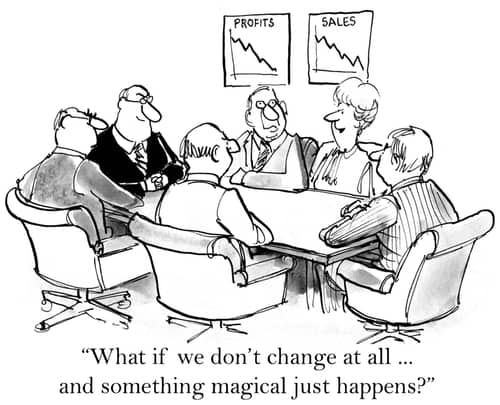
One of the key understandings that should come with a new Enterprise Software is that there is a need for identifying the changes in the IT infrastructure beforehand and then implementing it. Know how much change is required and if it is possible to handle before purchasing the new software. Also, the employees need proper training for change management and to get them comfortable with the new system before it goes live on an organizational scale.
2. Physical Requirements
Before jumping into a purchase decision, figure out what is the current IT infrastructure landscape, if it fits well or requires changes. For a newer setup, choose the software wisely and then plan the landscape. But remember, the software you choose defines this landscape and should be thoroughly checked to avoid any unwanted changes in the future.
3. The load of migration

Data is the basis for every industry functioning in this day and age. Introducing newer software to the system means adding your current data to it for validation and future operations. Check the requirements of the new system you plan on incorporating and if the required is way too much. Remember data is imperative to the organization and correct migration will minimize errors.
4. What the vendor has to offer
Sometime Enterprise Software vendors are too enthusiastic to sell the product but lack a structure post-purchase. Figure out what are the key support promises that they offer and if they have a track of delivering them. A due diligence of the provider should not be skipped especially if the vendor is not a big company.
5. Readying the team

Internal challenges are one of the key points to consider for the purchase. You will have to understand the requirements of the enterprise software development company well along with the features required. Each department will offer a different list of features they need. The challenge is to create a project scope that encapsulates all these important points and uses it as a foundation to identify the right software.
6. Software scope
Considering any enterprise software, and its capabilities, it is quite hard to find one that has everything that a business needs. As organizations strive to meet individual customer demands, they rely on customization to align their strategic objectives with enterprise solutions. For instance, one of our leading real estate organizations wanted to add a document management function that enabled them to share documents easily with their field agents. However, this posed numerous regulatory constraints considering security and privacy. Our solutions experts realigned the software architecture and build processes to meet the client’s requirement.
7. Taking unwanted risks

The market has opened up for Enterprise Software like never before and every day a new solution surfaces that promises to offer the best of all worlds. New-age technology can be highly enticing but always look under the hood and see if it has been taken for a test drive. Check LinkedIn, job boards, or other forums to find out more about the seller and the software itself. Don’t elevate your risks by getting attracted to high-end technology or pricing.
8. No detailed analysis
One of the issues that hamper the procurement of the right enterprise software is the lack of understanding of your own system. Run the analysis several times and match it with what the software will provide. Keep in mind to not depend on what the next version update will feature, rely only on what the solution provides today.
9. Cutting the influences

Decision making in organizations sometimes doesn’t necessarily stay with the designated employees. It is directly or indirectly influenced by the owners or other people in important positions. No matter how well they know or what better deal is offered through a reference, ensure that the decision, in the end, comes keeping the organization in mind and not the influences.
10. Exploring all opportunities
Do not hesitate to look at third-party support alternatives as they might offer something similar or better than premium vendor support. Look at the maintenance rates that come with the software as it is something that your organization will incur on a regular basis.
Whether you are trying to set up a new system or replace an old one, an expert perspective can help reduce these risks and challenges.
Stay up to date on what's new

Featured Blogs
Stay up to date on
what's new



Talk To Our Experts
Information Technology (IT) industry is composed of innovations, growth, and a lot many transformations. There are many uncertainties that are associated with the IT industry due to the rapid changes in the technological trends. The preferred skill sets by the employers also change as per the trends and demands of the industry and the IT professionals face the burden of the same. In 2017 the technologies, such as cloud computing, mobility, Big Data, Business Intelligence, and networking were on a rise.
The IT industry surpassed $3.4 trillion-mark in 2016 and is set to cross $3.5 trillion milestones by the end of this year. There are three primary components that are associated with this industry viz. hardware, software, and services. These three components make up for 59% of the global total and the rest 41% is covered by the fourth component, that is, telecom services.
The following list covers the most in-demand IT jobs and skills in 2017.
- Data Analysts: There are massive clusters of information that an organization processes and manages on a daily basis. The role of a Data Analyst includes the identification of relevant patterns and trends from these data sets to assist the organization in strategic planning and decision-making. There are various automated analytical tools that have also been developed for this purpose. With the increase in the need for data and information, the role of a Data Analyst is high on demand. It is expected to grow by another 25% in the next five years.
- Security Analysts: With the increase in the usage of data and information by the organizations, the likelihood of the security threats and attacks have also gone up. It has led to the increase in demand of Security Analysts, Security Administrators, and Data Security Managers. The year has witnessed some gruesome information security attacks, such as WannaCry ransomware attack. The attack had an adverse impact on the computer systems and network in over 150 countries. The need for a highly efficient data security team has become prominent as a result.
- Health IT: The use of IT in the healthcare sector has increased in the recent years. With the growth of remote health monitoring and telehealth tools, the demand for health IT skills has also enhanced. The much in demand roles in this area include Clinical Informaticist, Clinical Systems Analyst and Revenue Cycle Analyst.
- Web Development & Programming: The involvement of web has become an integral part of the business all across the globe. The latest web development and programming skills, such as the use of lightweight programming and responsive web design & development are being looked upon by the employers. Also, the skills of mobile application development have also grown due to the rise in the usage of mobile applications.
- UI/UX Designers: The primary motive of any web application or a service is to attain maximum customer base and higher levels of customer engagement. One of the most significant aspects to achieve the same is a rich and visually appealing User Interface (UI). The customers are attracted towards the applications that offer them higher usability and good user experience. The demand for this role has therefore increased with the increase in the use of web and mobile applications.
- IT Project Management: One of the most significant resources in any of the IT projects is the Project Manager. There is a lot of responsibility that is put on the shoulders of this resource during the project life cycle. It is, therefore, anticipated that the IT project management skills will continue to remain in demand in the years to come.
With the change in technology, there are also some of the skills that are no longer demanded in the IT industry. There was a time when Mainframe computing was considered as a top skill for an IT professional. However, the latest technological advancements have eliminated the demand for the same. The use of manual testing processes has been replaced by the automated testing practices which have kept the skills of manual testing on low priority. With the advent of social media, the requirement of SEO specialists has also diminished.
The face of IT is changing at a rapid pace. It has become necessary for the IT professionals to maintain the pace with the changing nature of IT. They should always look for the mechanisms and methods to enhance their skillsets to maintain their value in the market.
Stay up to date on what's new

Featured Blogs
Stay up to date on
what's new



Talk To Our Experts
There is no information that is not available on the internet today. Digitally, the world has grown into one big continent. Digital presence has become vital for every business, small or large. The times that you only depend on an offline marketing campaign or connection is gone. Today, more than 80 % of users go online and search for things. Even if they zero in on a product, they still will research the product or the brand online. In such a situation, a business that doesn’t have a strong presence online will suffer. Business growth can be directly related to promotions, public relations, advertising, and sales. Let us see how getting a digital presence will boost your business –
1. Provide information
A business with a decent website offering all necessary information that users seek is a good start. Even if you run an offline business, customers will seek online information to know about you even before walking into your office.
2. Get more customers
The digital world is a great place to find potential customers who might be interested in what you are selling. Social Media is a good place to begin campaigns that are not necessarily direct marketing. Spread the word with hashtags and keywords. Your current customers will share your posts and turn into indirect marketers as well. These platforms provide a boost to your visibility and provide the right traffic your business requires.
3. Be visible
When your business has been tuned with Search Engine Optimization (SEO) elements, you will start getting more and more traction. The right type of optimization will ensure that you end up as a top search whenever a customer is looking for a relevant product or service that you are offering. Also, it helps you get an edge over other competitions, both offline and online since your name will come to the front and grab more eyeballs.
4. Market your business
Advertising your business is the sole way to boost your sales and nothing works as good as digital marketing in this day and age. Apart from having a presence on social media websites, targeted marketing campaigns on these sites will spread awareness about your products and services team with great offers to attract customers.
5. Improve Services
Digital presence of your business provides you with an opportunity to directly interact with your customers. Listen to their grievances, feedbacks, and even offer a solution for their problems. This feedback pattern can help you decide on improving your products or services. Companies can consider some of these points as a part of their marketing strategies to bounce back or to adopt what way to go forward. Such a medium works perfectly well for your business as well as your customers. To increase visibility and drive new business, companies create custom business solutions to advertise online.
6. Global Presence
If your business is local and has an aspiration to go global, the digital world is the right place to put your foot forward. It helps in not just connecting with people worldwide but also getting yourself known to everyone. You can add posts on social media websites regarding your services and add a survey to know if they would like these products or services in their locality. It’s a great way to know the potential of a market even before you actually start the ground activity. Businesses that are looking for investments can also leverage on this very presence as one of their key strengths.
A great way to add a digital presence to your business is seeking the help of an experienced digital partner who can provide you with all the necessary tools to get you started and then skyrocket your business ahead.
Stay up to date on what's new

Featured Blogs
Stay up to date on
what's new



Talk To Our Experts
As the business environment becomes hyper-competitive, more businesses are finding value in mobile and web apps to boost customer engagement. Apps enable the marketer to deliver a solid mobile presence, with customized interfaces geared specifically to provide customers with the best possible experience. Apps streamline the customer’s buying process, automate many routine tasks, and enable new possibilities, to drive engagement better.
Catering to the Growing Customer Preferences
More and more marketers now roll out customer facing apps, to remain engaged with their customers always, enabling customers to buy from anywhere, and at any time.
Any debate on whether today’s businesses require customer facing apps is settled by the fact 2.6 billion people across the globe now have high-powered mobile devices within their arm’s reach, at all times. Black Friday sales through mobile devices crossed the One billion dollar mark in 2016, indicating the preference of online shoppers to use their mobile devices for the buying process.
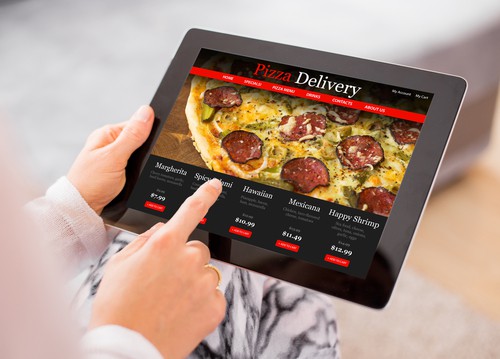
A good success story exemplifying the growing customer preference is Domino’s Pizza. The pizza giant’s new mobile app for customers to order delivery or in-store pickup of their food in the UK resulted in increase of e-commerce sales by 24.4%, and 52% of online coming in through mobile devices. The app has been downloaded more than 10 million times. Many customers prefer using the app rather than go through the painstaking process of calling up the store.
Leveraging the Power of Push and Pull Notification
As the adage goes, “out of sight, out of mind.” When a customer downloads an app, it remains on the phone, strengthening brand recognition. Regular visibility and interactions between the brand and the customer boost trust, so essential for transactions to take place.
A big advantage of the app is the ability to send push and in-app notifications to users. Such notifications, served virtually on a captive audience, influence the customer and deliver high success rates, as long as the notifications result in relevant and valuable content. The more the audience listens to the brand, the more they are likely to respond to marketing offers and chose the brand offerings when in need.
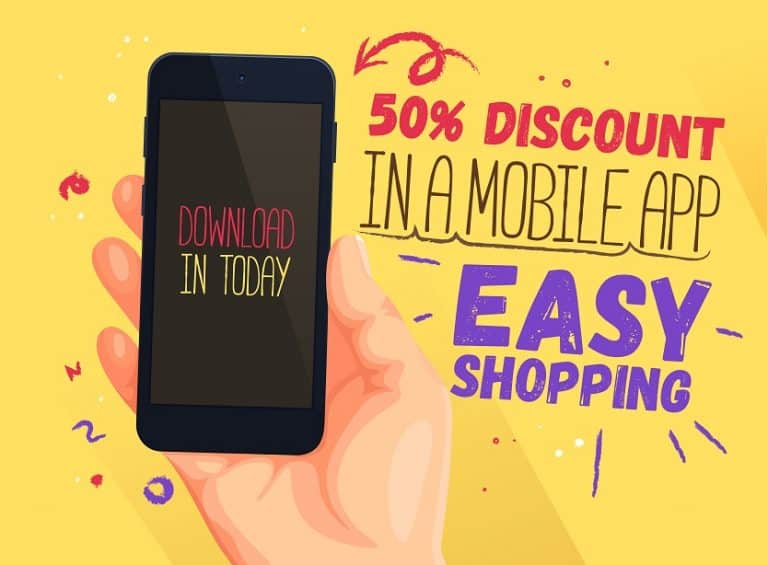
Push and in-app notifications are invaluable to inform users, especially younger demographics, of new products and offers. Most marketers use these options to reach out to customers proactively, with personalized offers. The best practice is to serve personalized recommendations based on factors such as most recent purchase, or the location of the user, offering direct value to users and warming them to the app experience. Generic push notifications are widely regarded as the junk mail of the mobile world, and may just push the user to uninstall the app.
Push notifications are also a great tool to counter cart abandonment. Sending instant push and in-app messaging, when the customer abandons the cart, enticing them with added offers, may be instrumental in changing their mind, and increase the likelihood of immediate conversion.
In-app messaging is proven to increase engagement by 26%. About 65% of users return to the app within a month, if push notifications are enabled.
Leverage Location-based Content
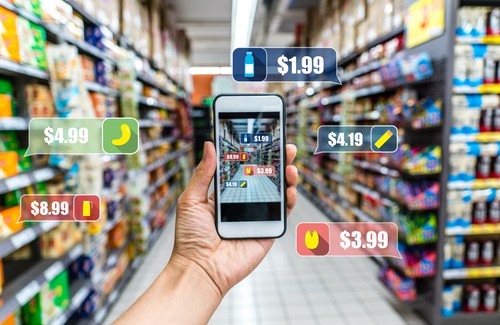
Beacon-based location marketing is now increasingly becoming attractive as a great way to boost customer engagement on mobile devices.
Smart marketers leverage beacon and geofencing technology to send location specific, contextual, and timely data-driven content to customers. They use beacons to push location-based offers and promotions, promote loyalty programs, and facilitate mobile-based proximity payments. Customers prefer such engagement, as evident from a survey by Aimia and Columbia Business School, where 69% of them agreed to share location data to receive location-based discounts.

The 2016 Coachella music and arts festival was path-breaking in the sense it sends out location-based notifications about artists and vendors to attendees. It also introduced a “Surprise and Delight” rewards program, rewarding attendees who synced their American Express Cards to the event’s iOS app. The event also provided beacon enabled mobile payments to attendees, doing away with the need for a physical wallet.
Pew Research Center estimates nine out of ten users in the United States enabling location services on their mobile phones.
Gamifying and Incentivizing the Experience
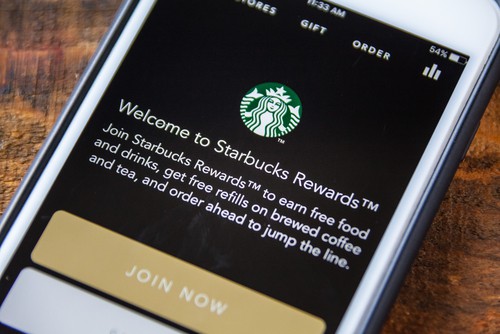
Promoting mobile-based loyalty programs increase customer engagement and bridge the gap between a brand’s online and physical presence. People love incentives, and rewards offer a good reason for them to come back to the app.
Apps make it easier to administer loyalty programs and deliver the associated rewards. The core of any loyalty program is customers getting reward points for every interaction with the brand. When customers see, their points adding up, they come to shop again. When such rewards are combined with gamification or points for any action done through the app, engagement is sure to increase manifold.
Starbucks is probably the most well-known brand having perfected the art of offering big rewards exclusively to app customers. The ‘My Starbucks’ rewards program allows customers to use the app to make pre-orders, custom orders, receive free upgrades and special discounts, based on their loyalty status. Enabling in-app payment speeds up the transaction, and increase convenience.
Leveraging the Power of Analytics
The spin off benefit of customers using apps is gaining valuable data for analytics. Structuring the app engagement, the right way delivers a ton of analytics on how users interact with the app.
App based engagement and transactions emit data, which subject to analytics, shed invaluable light on understanding the customer better. Such data can also be the basis for business and strategic decisions, as in how to position the product, adopt marketing pitches with greater success rate, and more.

However, analytics is still underestimated and underutilized to enrich the customer experience. Smart brands now leverage real time analytics to enrich the customer’s buying experience. One possibility in this front is helping customers get additional live information about the products they browse or short list for purchase. An associated possibility is gathering interesting and offbeat information associated with the project, such as a list of celebrities using the same product, showing some fun facts associated with the project, and more. Mobile and web apps make it considerably easier to deliver such information to the customer, in a seamless and non-intrusive way.
Another underestimated potential is leveraging the big data generated by apps to collaborate with other popular platforms. A good trendsetter in this front is Shazam, the leading music discovery app. Shazam for Brands’ leverages accumulated user data and brand advertisements to identify the best artist and musical genres for brands and create specific and customized ad units to drive customer engagement.
Deep Linking to In-App Content
The ever-prevalent social networks allow marketers to share their content and gain an even larger audience. Apps offer an additional and more robust option in this direction. Allowing users share their experiences inside the app increases the popularity of the app, and lead to more users downloading it, delivering multiplier effects.
Deep linking, to content within an app, makes it possible to share in-app content easily. The spin off benefit is keeping existing customers engaged within the app, improving retention rates and enhancing the user experience.

A good benchmark to emulate is the Nike+ Run Club app, which allows sharing the in-app content to social media platforms.
With marketing now a high-stakes game, intuitively designed mobile and web apps become a valuable source of competitive advantage. Marketers who identify their customer’s path to engagement and purchasing, and use the app to optimize the journey comes out on top.
Stay up to date on what's new

Featured Blogs
Stay up to date on
what's new











